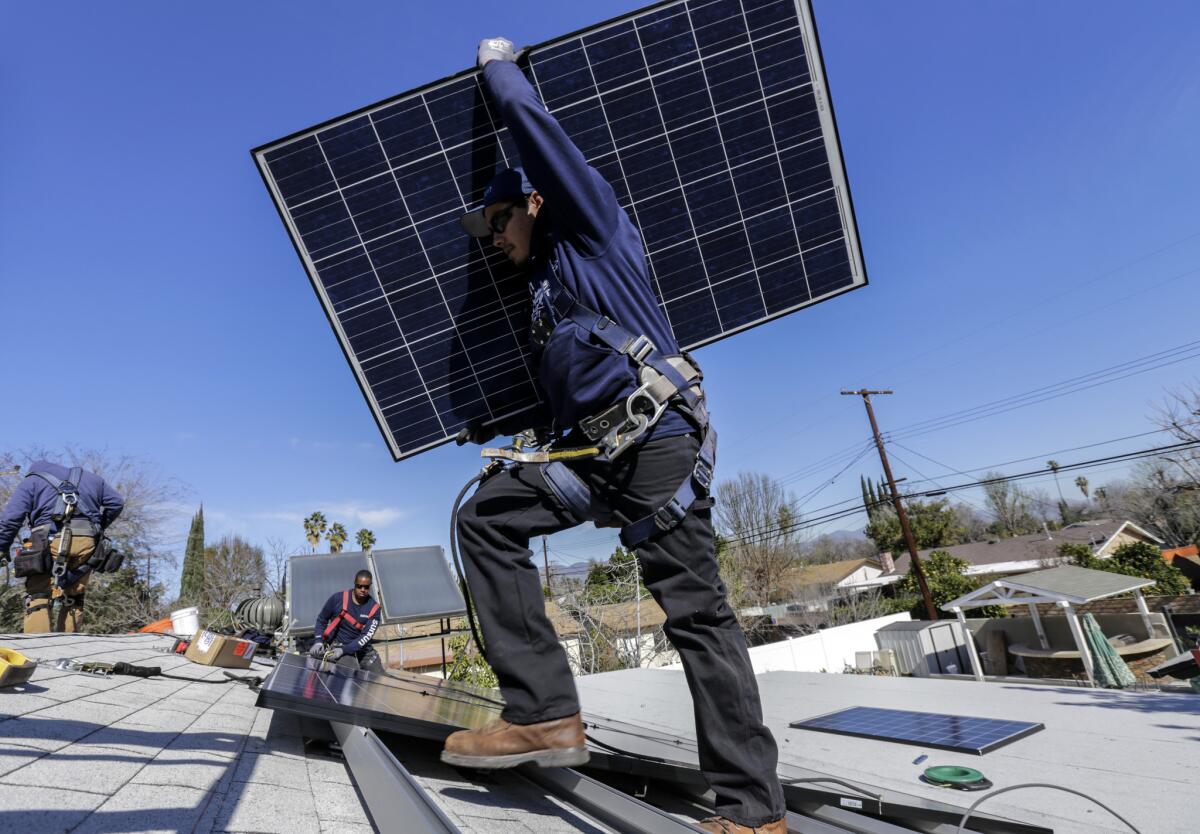California power outages: Here’s how you can keep the lights on next time

Millions of Californians have learned this month what it’s like to live without electricity in the 21st century, as Pacific Gas & Electric, Southern California Edison and San Diego Gas & Electric have shut down power lines in an unprecedented effort to avoid starting wildfires.
These preemptive blackouts, known as public safety power shutoffs, are likely to continue until the utility companies have upgraded their infrastructure sufficiently to minimize the risk of fires. PG&E’s chief executive, William D. Johnson, recently warned the use of planned outages could last another decade.
Experts say there are steps Californians can take to keep the lights on during the next planned outages — although some of those steps are expensive.
Here are some options:
Buy a backup generator
This can be the simplest and cheapest option. But it also comes with drawbacks.
A typical portable generator costs between $400 and $1,000 and runs on gasoline, according to a Consumer Reports buying guide. These types of units won’t power your entire home — air conditioning is probably out of the question — but they should generate enough electricity for lights, a refrigerator and maybe some heating, said John Galeotafiore, associate director of product testing at Consumer Reports.
The main problem is pollution. Portable generators must be operated outside, with extension cords running into a home, because they produce deadly carbon monoxide. Consumer Reports recommends placing them at least 20 feet from a house, with the exhaust vent pointed away from any structures.

Generators also produce hazardous air pollutants such as nitrogen oxides, a primary component of smog — which is a major health hazard in Southern California.
“They’re a lot dirtier than an automobile,” Galeotafiore said.
The war on smog has been called one of America’s greatest environmental successes.
A better backup power option, for households that can afford it, is a permanent standby generator that automatically fires up when the grid goes down and can supply more electricity than a portable generator. Standby generators run on natural gas or propane, and can take months to attain permits and install.
“You could end up spending $3,000 for the unit, and another $10,000 or $12,000 to have it installed,” Galeotafiore said.
Go solar (with storage)
Solar panels paired with lithium-ion batteries can provide the same benefits as a portable generator, without the pollution concerns.
Rooftop solar was once considered the province of wealthy environmentalists, but solar costs have fallen dramatically over the last decade — and battery costs are beginning to do the same. Bernadette Del Chiaro, executive director of the California Solar & Storage Assn., said a typical home can get a four-kilowatt solar system with a 10 kilowatt-hour battery for about $25,000, or as low as $15,000 once state and federal incentives are factored in.
When you buy solar panels and storage — or when you add a battery to a preexisting solar system — your installer should ask which “critical loads” you’d like to keep powered during a blackout, Del Chiaro said. When the grid goes down, your battery will know to send electricity only to those appliances.
As with a portable generator, you’ll probably be able to keep your food cold, and maybe run a TV and a few outlets to keep your phone charged.
“There’s no standard, ‘It will last for X number of hours,’” Del Chiaro said. “It depends on how big a battery you have, and how big your critical loads are and how long you want to run those critical loads during a 24-hour period before the batteries can be recharged,” when the sun rises the next day.

Brett Simon, a senior storage analyst at the research firm Wood Mackenzie, cautioned that solar-plus-storage can’t guarantee uninterrupted power for multiple days because it takes several hours for a battery to recharge, and cloudy weather could get in the way. But he described a rapidly expanding market, with even Generac, a longtime manufacturer of portable generators, acquiring the battery storage company Pika Energy earlier this year.
“The different companies will all claim that their products are superior to the others,” Simon said. “All of them can do backup.”
The Eland solar contract had been delayed due to concerns raised by the city electrical workers union.
Power your house with an electric vehicle
This one is still a challenge for non-engineers — at least for now.
Electric cars run on the same lithium-ion batteries that power energy storage systems, so in theory they should be able to provide as much backup power as a typical stand-alone battery, if not more. The concept is simple, said Eileen Tutt, executive director of the California Electric Transportation Coalition.
“It’s a brilliant option,” she said.
The electronics needed to facilitate “vehicle-to-home” power aren’t yet widely available in the United States. But several automakers are working on it. The Nissan Leaf has been used for vehicle-to-home power in Japan, and Mitsubishi Motors began selling a vehicle-to-home package in Tokyo this month.
There’s one thing that hardly anyone — least of all politicians — is talking about publicly. And that’s the inevitability of customers’ monthly bills rising to pay for so-called hardening of the electrical grid to make it less likely to ignite wildfires.










